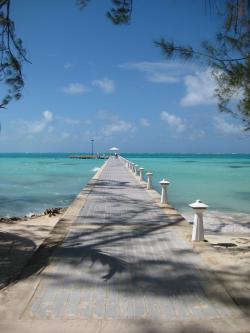jks
About
- Username
- jks
- Joined
- Visits
- 36,720
- Last Active
- Roles
- Member, Administrator, Moderator
- Points
- 670
Reactions
-
v1.190: keyboard shortcuts, IQ display mPSK, FAX alignment, DX label features
Lots of changes.Keyboard shortcuts is a work-in-progress. Press "h" or "?" on your keyboard. Feedback requested, especially from our visually impaired users.The mPSK stuff needs a separate discussion. Try QPSK mode with VLF MSK or LF DGPS signals and 8PSK mode with strong, non-fading STANAG 4285 signals on HF.FAX: the entire image will now align on shift-click including the part of the image already received. On mobile devices a touch on the image will cause an align.More info: https://github.com/jks-prv/Beagle_SDR_GPS/blob/master/CHANGE_LOG -
wspr autorun log
-
SAQ 17.2 kHz
SAQ 17.2 kHz was on yesterday 01 May +/- 10:00 UTC (http://alexander.n.se) Screenshot below from Kiwi in Central Ukraine. Tape loop CQ followed by some antenna tuning (causing oscillator pulling). Also heard on Kiwi in Qatar and many others I'm sure.
-
What is the status of the WSPR background and autostart features? [added in v1.181]
-
Multiple Kiwis responding to a single URL
The v1.188 release features a suggestion by Paul from http://www.amradioantennas.com to use URL redirection to allow multiple Kiwis to respond to a single URL. That is, when a connection is made to mykiwi.com:8073, and all 4 channels are busy, your browser will be automatically redirected to another Kiwi specified in the first Kiwi's configuration (e.g. mykiwi.com:8074). This can continue for as many Kiwis as you want until you hit the browser limit on redirections, which is a fairly large number. Your browser will also detect if you accidentally configure an unending "loop" of Kiwis with all channels busy and complain about that.See the instructions on the "connect" tab of the admin page for details. This turned out to be fairly easy to implement. Thanks Paul! -
v1.188: switching compilers from gcc to clang
Today's update switches compilers from gcc to clang. This means in the future update builds will run about twice as fast.But today's build will take some time as the new compiler is downloaded and installed. Total update/build time will be approximately 15 minutes.It is extremely important that you do not interrupt this process and potentially leave your Kiwi in a partially updated state unable to run or update further (i.e. "bricked"). -
What is the status of the WSPR background and autostart features? [added in v1.181]
@Glenn: It's a bug. Being fixed in today's update. -
kiwid restarts after assertion failure in support/coroutines.cpp [fixed in v1.184]
Thanks for reporting this. As you can see I added some additional debugging in the latest release (the "ca_pause -1594 ..." stuff).I added the assertion a little while ago to make sure a hardware (FPGA) constraint wasn't getting overrun. If it is then a sat that is acquired may not be tracked properly. And we see this behavior sometimes. But this assertion has never occurred in my testing (or at least I've never caught it happening). So if I can understand what's going on and fix a bug this might result in greater tracking successes which would be very helpful. -
kiwid restarts after assertion failure in support/coroutines.cpp [fixed in v1.184]
No, that shouldn't be related. There was definitely a bug in the task lock code for a special case. It's just that the case only ever occurs when the GPS acquisition is enabled or disabled as users make SDR connections. I was able to trigger the bug on my own Kiwi by artificially increasing the rate of occurrence of the special case. -
kiwid restarts after assertion failure in support/coroutines.cpp [fixed in v1.184]
Okay Ivan, I've got a fix running on your Kiwi and so far it looks good. I was able to write some test code for my Kiwi that caused the assertion failure to occur. So I'm pretty sure that the bug I fixed is really the source of the problem. I'm not sure why it happens so often with your Kiwi. The problem occurs when the GPS acquisition task is started and stopped as the number of user connections changes between zero and greater than zero. That is the only case that uses a special case of the coroutine task sleep/lock code.I'll include this fix in the next update.






